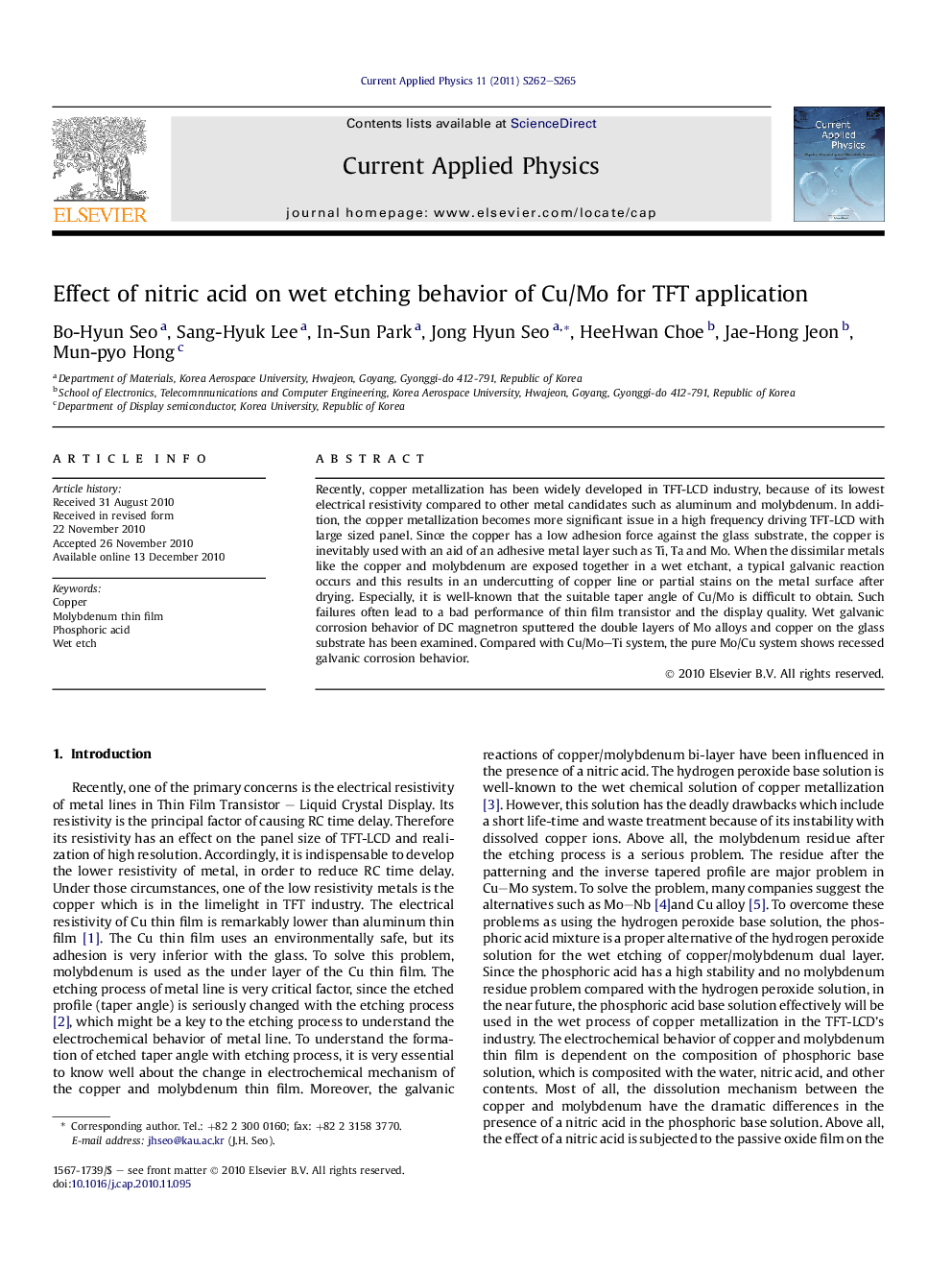| Article ID | Journal | Published Year | Pages | File Type |
|---|---|---|---|---|
| 1786937 | Current Applied Physics | 2011 | 4 Pages |
Recently, copper metallization has been widely developed in TFT-LCD industry, because of its lowest electrical resistivity compared to other metal candidates such as aluminum and molybdenum. In addition, the copper metallization becomes more significant issue in a high frequency driving TFT-LCD with large sized panel. Since the copper has a low adhesion force against the glass substrate, the copper is inevitably used with an aid of an adhesive metal layer such as Ti, Ta and Mo. When the dissimilar metals like the copper and molybdenum are exposed together in a wet etchant, a typical galvanic reaction occurs and this results in an undercutting of copper line or partial stains on the metal surface after drying. Especially, it is well-known that the suitable taper angle of Cu/Mo is difficult to obtain. Such failures often lead to a bad performance of thin film transistor and the display quality. Wet galvanic corrosion behavior of DC magnetron sputtered the double layers of Mo alloys and copper on the glass substrate has been examined. Compared with Cu/Mo–Ti system, the pure Mo/Cu system shows recessed galvanic corrosion behavior.
